Verona travel guide: A comprehensive guide to Verona
This Verona travel guide will tell you all you need to know about Verona if you’re thinking about visiting this northern Italian city. Verona is one of our favourite Italy city break destinations. A city synonymous with love thanks to its two most famous residents – Romeo and Juliet – there is nothing not to like about beautiful Verona. These days, Verona contains one of the richest collections of Roman remains in Northern Italy. But it’s also home to some incredible examples of Romanesque, Middle Ages and Renaissance art and architecture too. It’s not therefore surprising that it is one of Italy’s UNESCO World Heritage sites.
It is less well known that many Italian cities – Venice, Florence or Rome for example – but it also comes with far fewer tourists too. Verona is, in our opinion, all too often underrated and yet we love it. We’ve put together a Verona travel guide, complete with all the top tips about what to see in Verona, what to book in advance and even what to eat!
Verona Travel Guide to the history of Verona
Verona has had a long and illustrious history. Its origins certainly date as far back as the 1st century BC but there was probably an older settlement here prior to the Romans who took possession of Verona in 89 BC. The city saw a lot of construction during the reign of Emperor Caesar. And in 49 BC, the inhabitants of Verona became Roman citizens, making Verona a Roman municipium. The city flourished under Roman rule and many Roman remains are still visible today, not least the incredible Arena di Verona.
Later on, Verona fell under the control of the Ostrogoths and Lombards. A number of monasteries were built in the city during this period. And then, in 1262, the Scala family then took over the city and Verona saw a number of quite significant modifications. It really flourished as a city during this time. New city walls were constructed along with the Piazza delle Erbe and adjacent Piazza dei Signori. However, the Scala family were overthrown by the Visconti’s in 1387. In turn, they were overthrown by the Venetians in 1405. Despite this, Verona continued to flourish artistically and a number of palazzos were built.
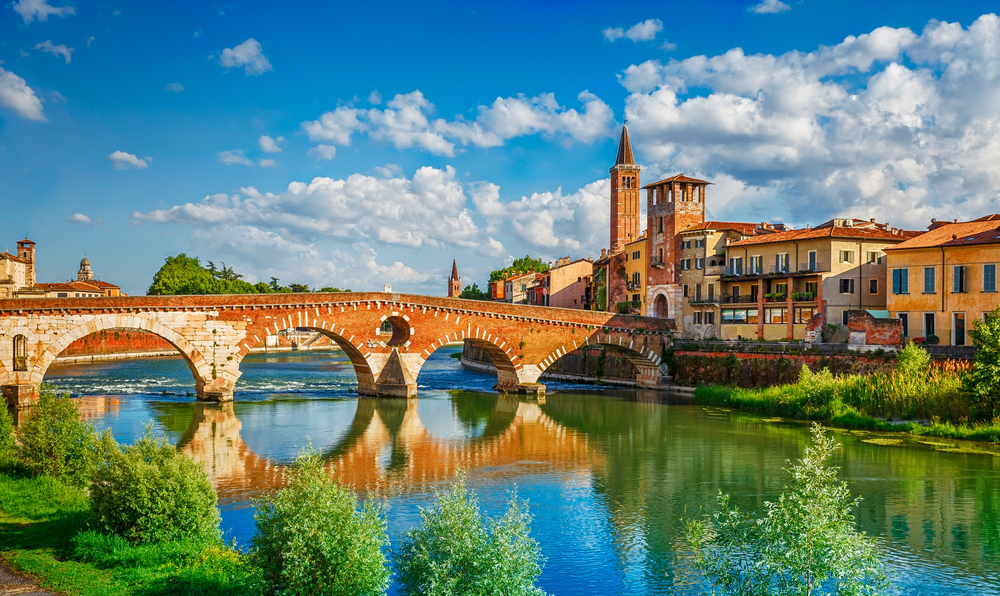
The 18th century saw increasing tensions between the Verona’s elite and Venice. Between 1796 and 1814, Verona was ruled over by the French and then also by the Austrians from 1801 to 1805. From 1814 to 1866, it was then ruled by the Hapsburgs who constructed a massive series of fortifications. And then finally it was annexed to the kingdom of Italy, ending its military role.
Sadly, Verona was badly damaged during WWII. However, in 1945, a huge reconstruction programme was begun, creating the historic centre that you see today. Another restoration project took place more recently in the 1970s, which transformed a number of Verona’s neighbourhoods.
For visitors to the city today, find out what to see and do in our Verona travel guide.
Verona Travel Guide: to What to see and do in Verona
If you’re going to be spending 24 or 48 hours in Verona, then it’s well worth investing in a 24 or 48 hour Verona Card. This gives you free entrance to over a dozen of Verona’s museums and attractions. It also provides reduced price entry to many more. Not only that, but it provides unlimited travel on the ATV transport system. And, importantly, it also gives you skip the line entry to what we would argue is Verona’s main attraction – the Arena di Verona. The Arena is the first attraction in our Verona travel guide list of what to see and do in Verona.
Enjoy a concert in the Arena di Verona
The Arena di Verona was built in 30 AD during the rule of Roman Emperor Tiberius. It is the third largest amphitheatre in Italy. Incidentally, the largest is the Colosseum in Rome, whilst second is that in Capua. It is incredibly well preserved, so much so that it still used for performances today. If you can, visit during the Arena di Verona Opera Festival which takes place every Summer. Originally, it would have held 25,000 people who would have flocked to the amphitheatre to watch gladiator fights and naval battles. These days, audience sizes are smaller with seating for just 14,000. However, this still makes it the world’s largest opera theatre today. But it tends to be opera singers, orchestras and dancers that keep audiences entertained not gladiator fights any more! That said, you don’t need to attend a concert to visit. It’s open during the day and visitors can walk around the seating area and stand in the arena where the gladiators would once have fought. Walk to the very top of the stone seats to enjoy wonderful views over the Piazza Bra.
It can get busy so buy a Verona card in advance to skip the queues. Or, we can thoroughly recommend enjoying a guided tour of the Arena di Verona. Not only will this ensure you skip the queues, but your licensed guide will really bring to life the history of this incredible amphitheatre. Or, opt for the ultimate experience and book an Arena di Verona opera ticket. There is no better place to enjoy a live opera of performance. This is where opera greats such as Luciano Pavarotti, Maria Callas and Placido Domingo have performed over the years.
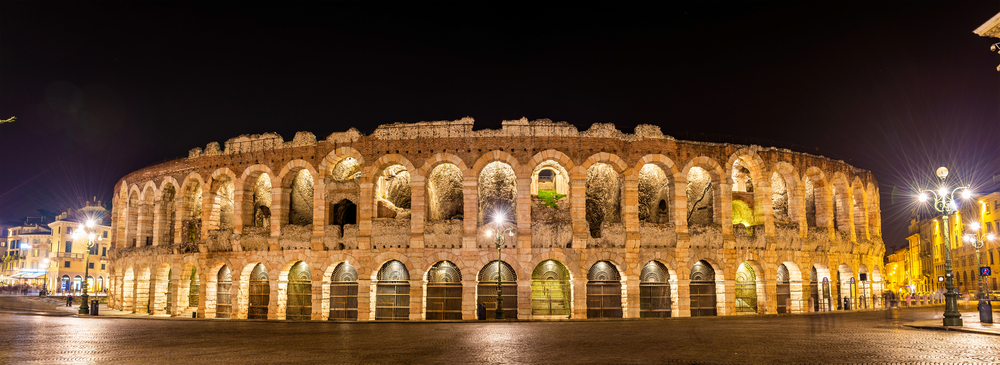
Discover Opera at the Teatro Filarmonico
The Arena di Verona is not the only place to discover opera in Verona. The Teatro Filarmonico has been wowing audiences since it opened in 1732. The building was sadly damaged a number of times over the years, both by fire and by WWII. But it has been sympathetically re-built and is a stunning setting to enjoy opera, ballet and music concerts throughout the year.
Enjoy a drink in the Piazza Bra
The Piazza Bra is the largest square in Verona. It’s also the social hub of the city. It is surrounded with cafes and restaurants. Grab a chair and enjoy a drink and a spot of people watching! There are many buildings to be admired around its perimeter. These include the Museo Lapidario Maffeiano, home to an impressive collection of tombstones. Also in the Piazza Bra are the Palazzo Guastaverza and the Palazzo Guglienzi. And Piazza Bra is also home to Verona’s town hall. This is housed in the neo-classical Palazzo della Gran Guardia. This palazzo also hosts regular art exhibitions as well as VinItaly, an annual Verona wine conference. Finally, on the other side of the square is the Palazzo della Gran Guardia. This took over 200 years to complete but we think it was worth the wait! If you’re visiting in the height of the Summer and are in need of shade, then head to the centre of the piazza and to the Giardini Vittorio Emanuele II. Here you can enjoy some cooling shade under the mature trees.
Stand in the Piazza delle Erbe
This is a great starting point for any trip to Verona. The Piazza delle Erbe stands on the site of what would have been the old Roman forum. There is much to see in this square. On one side, there is the ancient town hall, the Torre dei Lamberti, the Judge’s Hall (Casa dei Giudici) and the Casa Mazzanti. On its western side is the Palazzo Maffei. And on its southern side is the Casa dei Mercanti (House of the Merchants). This is now the seat of the Banca Popolare di Verona. In the centre of the square is the fountain built by Cansignorio della Scala in 1368. A statue called Madonna Verona which is believed to date back much earlier to 380 AD sits on its top. Also in the middle of the Piazza delle Erbe is the Colonna del Mercato dating back to 1401. This Gothic column bears the Visconti coat of arms. And finally you will find the berlina here too. This is a marble canopy that was built for public vestitures. Enjoy a drink in one of the cafes here. Just be aware that you tend to be charged tourist rates on any food and drink in this square.
Climb the Torre dei Lamberti
For the best views of the city, climb the 368 spiral staircase to the top of the Torre dei Lamberti. Alternatively, opt to take the glass elevator to the top instead! This tower stands at 84 metres tall and was built in the 12th century by the Lamberti family. However, the tower was struck by lightning in 1403 and restoration on it did not take place until the mid 15th century. At that time, the tower was expanded though. This expansion is clear to see thanks to the different materials used during that period, including marble. A clock was then added to the tower in 1779. Whilst this is included in the Verona Card, we recommend booking your tickets to the Torre dei Lamberti in advance to avoid disappointment. Book tickets here.
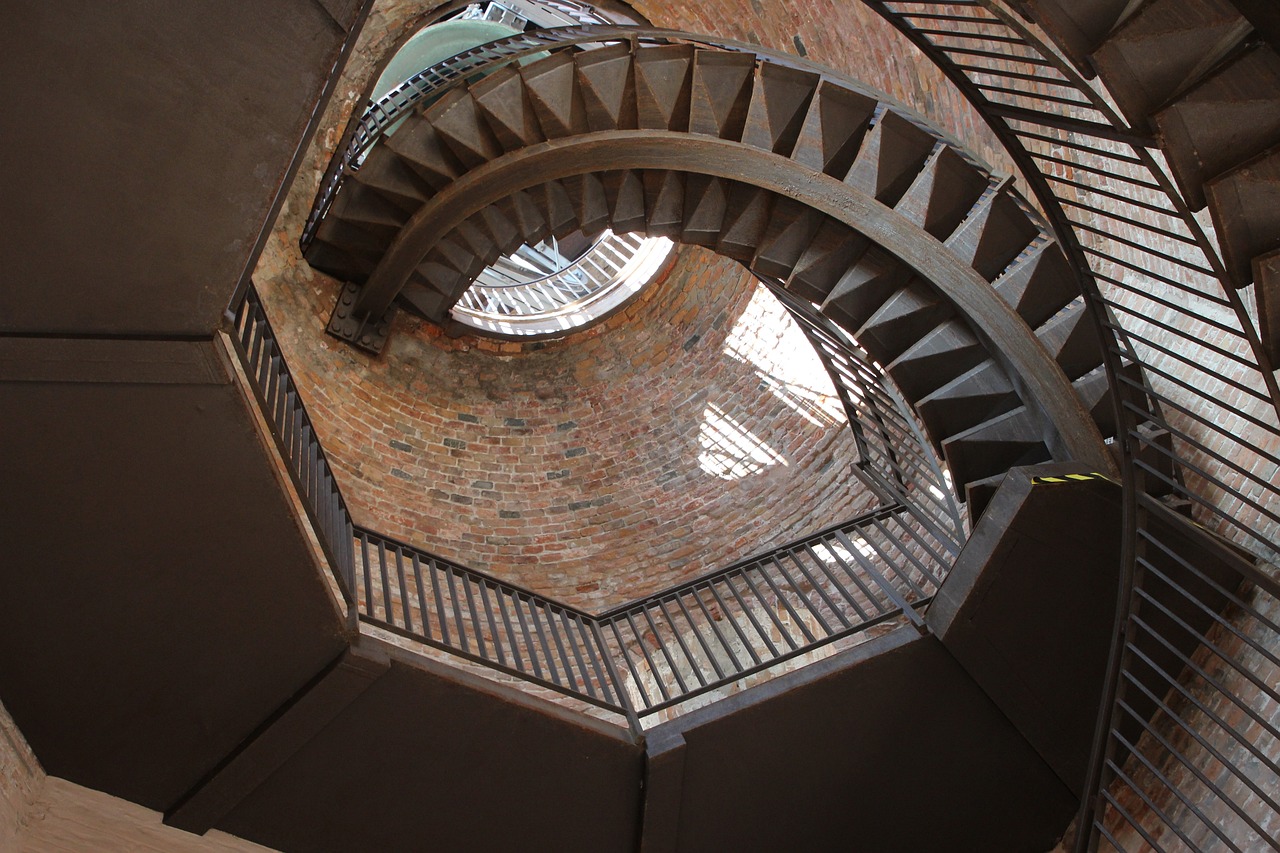
Admire the frescoes on the Case Mazzanti
In the 15th and 16th centuries, the facades of many of Verona’s most prominent buildings were decorated with frescoes. It was a way for the rich to show off their wealth and good taste. However, interestingly, it was also a cheaper way of decorating the front of your house than friezes or decorations in stone would have cost! These decorated facades earned Verona the nickname urbs picta (meaning painted city in Latin). At this time, the Mazzanti family commissioned painter Alberto Cavalli to decorate the facade of their house on the Piazza delle Erbe. He did so, depicting mythological and allegorical scenes. It’s astonishing to see how well preserved these frescoes are today.
Visit the Palazzo Maffei
This Baroque palace is decorated with statues of Greek gods. Built in 1523, it was constructed on the remains of the capitolium. The palace stands opposite a white marble column (Colonna di San Marco), on which stands St Mark’s Lion, the symbol of Venice. It was built in 1523 but the lion you see today was replaced in the 19th century.
Discover the tower houses of Verona
The Jewish community in Verona dates back to the 10th century however the first synagogue here was built in the 15th century. This was when the Venetians first allowed Jewish money lenders to live in the city. Over the years, the number of Jews in Verona ebbed and flowed. The Jewish Ghetto was built in the 17th century near the Piazza delle Erbe. It was situated in between where today you find Via Mazzini and Via Pellicciai. Much of the ancient ghetto has been destroyed over the years – the gates were demolished with the arrival of Napoleon’s troops in 1796 for example. But you can still see the tower houses – typical of ghetto architecture – that still stand on the corner of the Piazza delle Erbe and Via Mazzini.
Marvel at the Piazza dei Signori
When this piazza was built, it would have been at the heart of Verona. And the buildings that surrounded it would have been the homes of powerful Veronese families. Not only that. They would also have included a number of extremely important political buildings. Look out for the Palazzo del Comune, the Palazzo del Capitanio, the Palazzo della Prefettura and the Loggia del Consiglio. It won’t take long to visit the Loggia del Consiglio as you can only view it from the outside but it’s super pretty and well worth seeing on your trip to Verona.
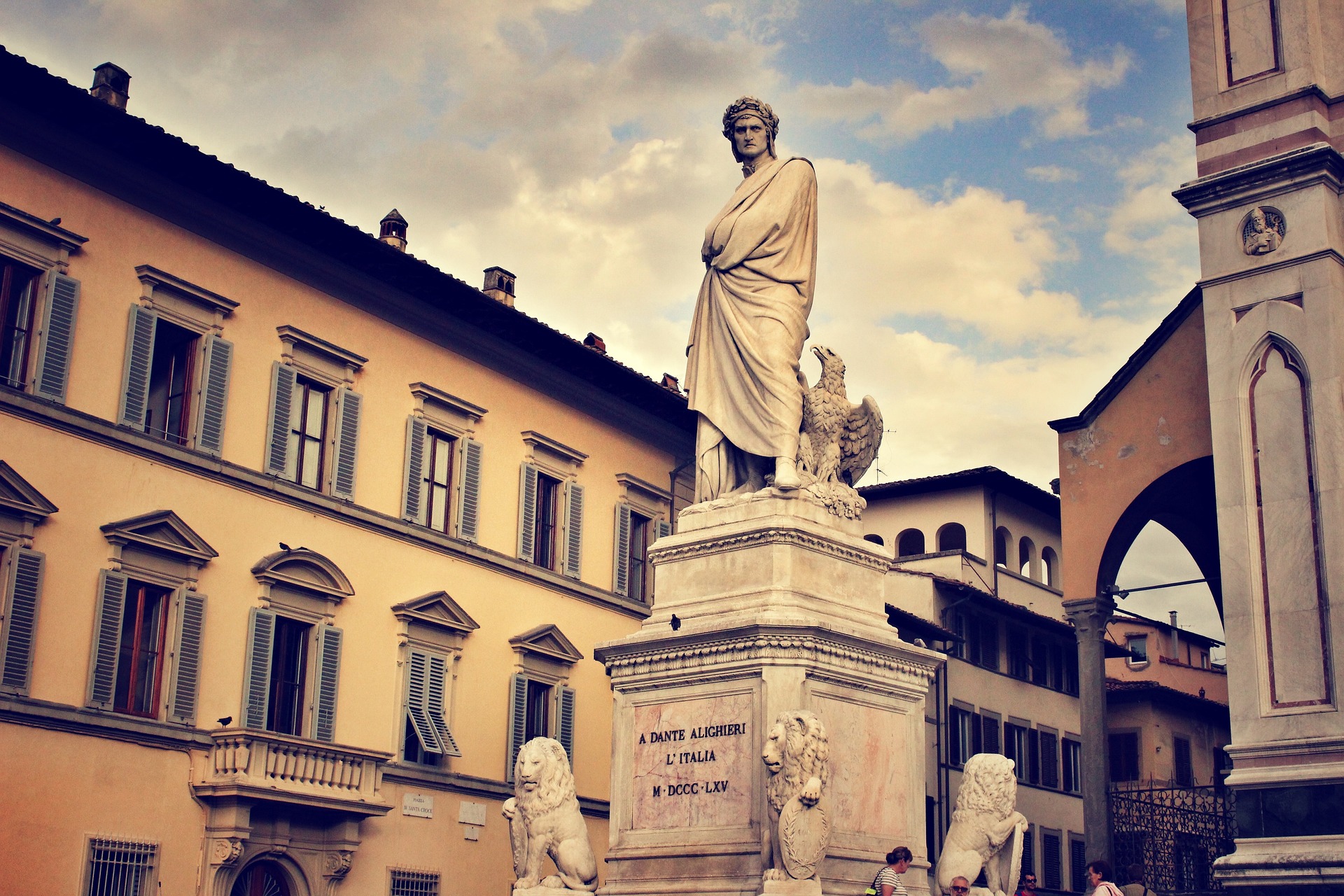
A monument to Dante dating back to 1865 stands in the centre of the Piazza dei Signori. Dante was given safe haven in Verona and it is said that he drew inspiration for many future works from his time spent in the Piazza dei Signori. Incidentally, if you want to learn more about Dante, then this 1.5 hour walking tour of Verona focuses on bringing Dante’s life and works to life.
Visit the five Scaliger tombs
The Scaliger tombs are a group of five Gothic funerary monuments. They were built by the Scaliger family and were lavishly decorated with a plethora of statues and a sarcophagus. Rising high above the ground, they are topped with a They are situated outside the Church of Santa Maria Antica and are kept separate from the street by iron bars. Rising high above the ground, they are topped with a statue of the deceased on a horse and wearing full armour. Incredibly elaborate, this was an ostentatious show of wealth and grandeur even in death.
Visit the House of Giulietta
Side by side with the Arena di Verona, the House of Juliet must be the next attraction for which Verona is most famous. Whilst Shakespeare’s story of Romeo and Juliet is a fictional one, it is believed that the playwright drew inspiration for the story from Verona and from the Dal Cappello family that lived there. Visitors can head to the House of Giulietta which was where the Dal Cappello family lived back in the 13th century. If you don’t want to pay to enter, then it is actually free to visit the courtyard in front. From here, you can look up at the famous balcony.
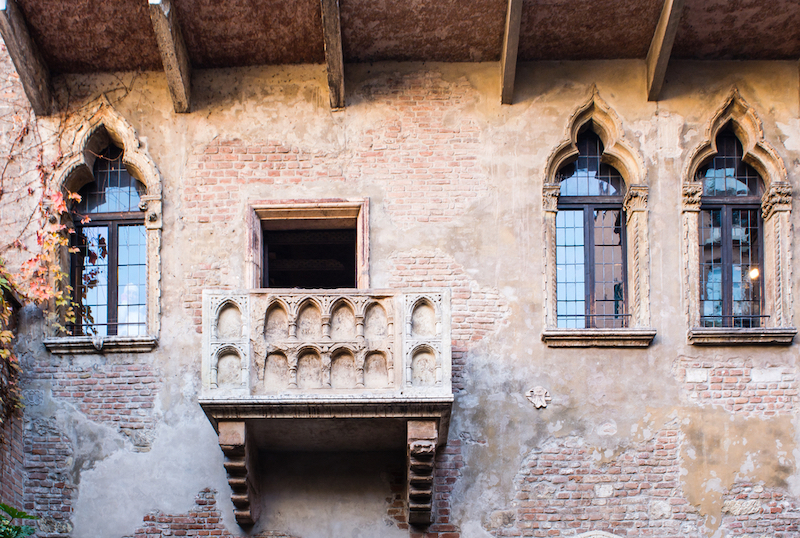
Incidentally, the balcony was a later addition to the building and wouldn’t even have been there at the time when the Dal Cappello family lived there! You’ll also find a bronze statue of Juliet in the courtyard. So the story goes, if you rub her right breast, you’ll be lucky in love!! We do recommend you do head inside though. The tour of the House of Giulietta is an interesting one and you can then stand on the balcony for yourself! Book skip the line tickets to the House of Giulietta to avoid the queues.
Admire the Roman theatre
Verona’s Roman theatre was built in the 1st century AD and is still used as a theatre today. Some original seating still remains but much was reconstructed more recently and more modern seating added. Incidentally, an Archeological Museum situated in a monastery above the theatre houses many of the artefacts discovered here during the excavations. It’s a must see stop on your trip to Verona if you have a passion and interest for Roman history.
Discover the Roman remains
The Arena and theatre aren’t the only Roman remains in Verona. Also of note is the Porta dei Leoni. Dating from the 1st century AD, this Roman gate would once have stood at an impressive 13 metres tall. It would have been the main entrance into the Roman city. Nearby some excavated Roman ruins are left open within the shopping street. It’s a very clever way of showing the passage of time from Roman civilisation to modern day. The other Roman gate in the city is the Porta Borsari.
Discover the other gates to the city
Not all Verona’s gates date back to Roman times. Three of Verona’s gateways actually date back to the 1500s. The Porta Palio, Porta Nuova and Porta San Zeno were all designed by Michele Sanmicheli and are in a Renaissance style.
Go shopping in Verona
Verona is known for its high end shops. The main shopping street – Via Mazzini – is pedestrianised and is lined with lots of designer stores as well as independent boutiques.
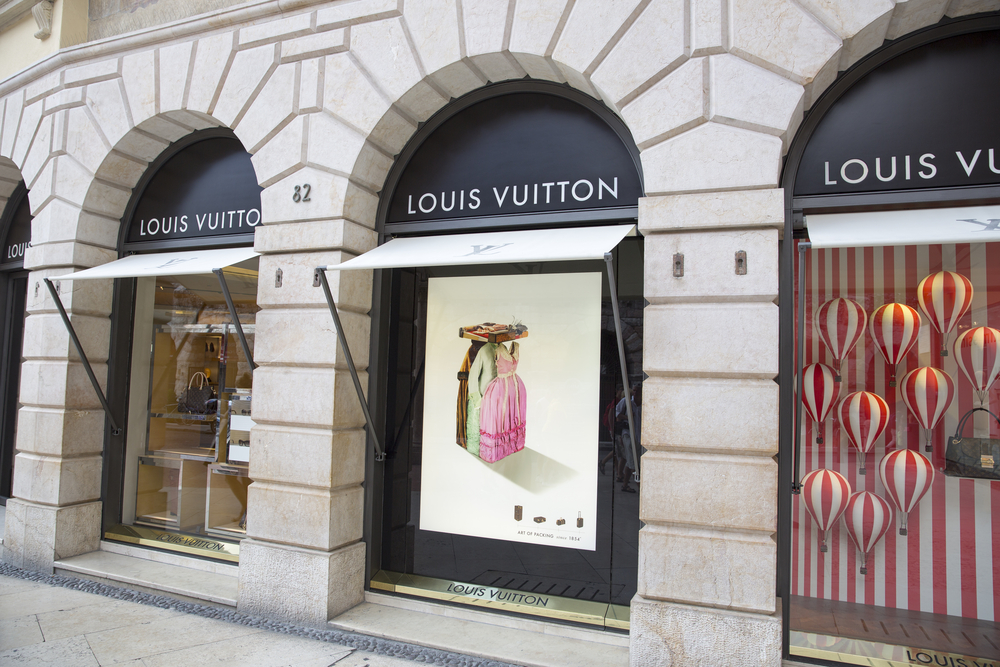
If you need more shops that the historic centre of Verona can offer, then head to the relatively new Centro Commerciale Adigeo. This indoor shopping centre is home to numerous brands and is situated about a 10 minute drive from the heart of the city.
Head to the museum
Verona boasts numerous museums. Access to most is free or discounted using a Verona card. One of our favourites is the Castelvecchio Museum. It’s housed in a rather magnificent castle built by the Scala family. Inside, there are a multitude of sculptures, paintings, jewellery and other artworks than span the centuries. Even if you’re not particularly interested in the exhibits, it’s worth visiting to admire the building itself. Many of the original features of the castle remain today and visitors are free to explore the grounds and ramparts. Head to the walls of the castle to enjoy the view of the Adige River and Castelvecchio bridge. The castle is large so make sure you leave enough time to do it justice.
For more modern art, opt for a visit to the GAM Achille Forti Modern Art Gallery in Verona instead. This museum is home to over 1600 pieces of modern Italian art. These dates from the early 19th century through to modern day. It covers realism, surrealism, expressionism and more.
Another museum worth making a beeline for is the Civic Museum of Natural History in Verona. Situated in the 16th century Palazzo Pompeii, it houses artefacts stretching as far back as the Palaeolithic, Neolithic and Iron Ages.
If you are visiting Verona with children, then the museum you must not miss is the CMV – Children’s Museum of Verona. With lots of interactive exhibitions and hands on activities to enjoy, the ethos is very much about learning through play.
And, outside the centre of Verona is the Museo Nicolis Villafranca. This is a must for any car enthusiast. It’s an incredible private collection of cars and aeroplanes that tell the story of 20th century design. Buy tickets to the Museo Nicolis Villafranca here.
Take a walk across the Castelvecchio Bridge
This pedestrian bridge is also referred to as the Scaliger Bridge. It was originally constructed in the 14th century but was partially destroyed in the 19th century and then completely destroyed in WWII. As a result, what you see today is a sympathetic reconstruction that exactly mirrors the original. Enjoy a stroll across and take in the picturesque views along the Adige River.
Admire the Arco dei Gavi
Sitting adjacent to the Castelvecchio is the Arco dei Gavi. This is an ancient arch which was originally built and commissioned by the Gavi family in the 1st century AD. Once upon a time (and when it was in a different location), it would have been the main entrance gate into the city of Verona for those travelling on the ancient Via Postumia. However, it was demolised in the Napoleonic period and moved to the Arena. It was then reconstructed in the 1930s using some of the original stone in the position you see it in today. These days, it won’t take long to visit but it’s worth seeing.
Admire the views from the Ponte Pietra
The Castelvecchio bridge is not the only bridge worth crossing in Verona. Also of note is the Ponte Pietra. This arched bridge was built by the Romans in 100 BC. Not all of what you see is original. Some parts have been reconstructed due to damage during WWII and also due to flooding. But you can distinctly see which sections relate to which period thanks to the different materials used. Head here for amazing views of Verona’s cathedral and Roman theatre.
Soak in the views over Verona
For even more spectacular views, head a little way outside the centre of Verona to the Piazzale Castel San Pietro. The Castel San Pietro is an Austrian fortress that sits atop the hill on the far side of the river. It’s reached either by climbing up the 250 steps to the top. Or, for those who can’t manage the climb, there is also a funicular that takes you to the top. Unfortunately, the castle itself is not open to the public. However, the area around it enjoys wonderful views of Verona’s rooftops and of the Torre dei Lamberti. We recommend you visit at sunset. Why not take a picnic with you and watch the orange hues descend over the city.
Another great place to enjoy some spectacular views is from the Santuario della Madonna di Lourdes. This is positioned even higher than the Piazzale Castel San Pietro. Because it is located a little further away, it’s also a little quieter with less visitors. Walking to the sanctuary from the centre of Verona will take around half and hour. And, once there, as well as enjoying the views, you can also enjoy a walk in the pretty gardens.
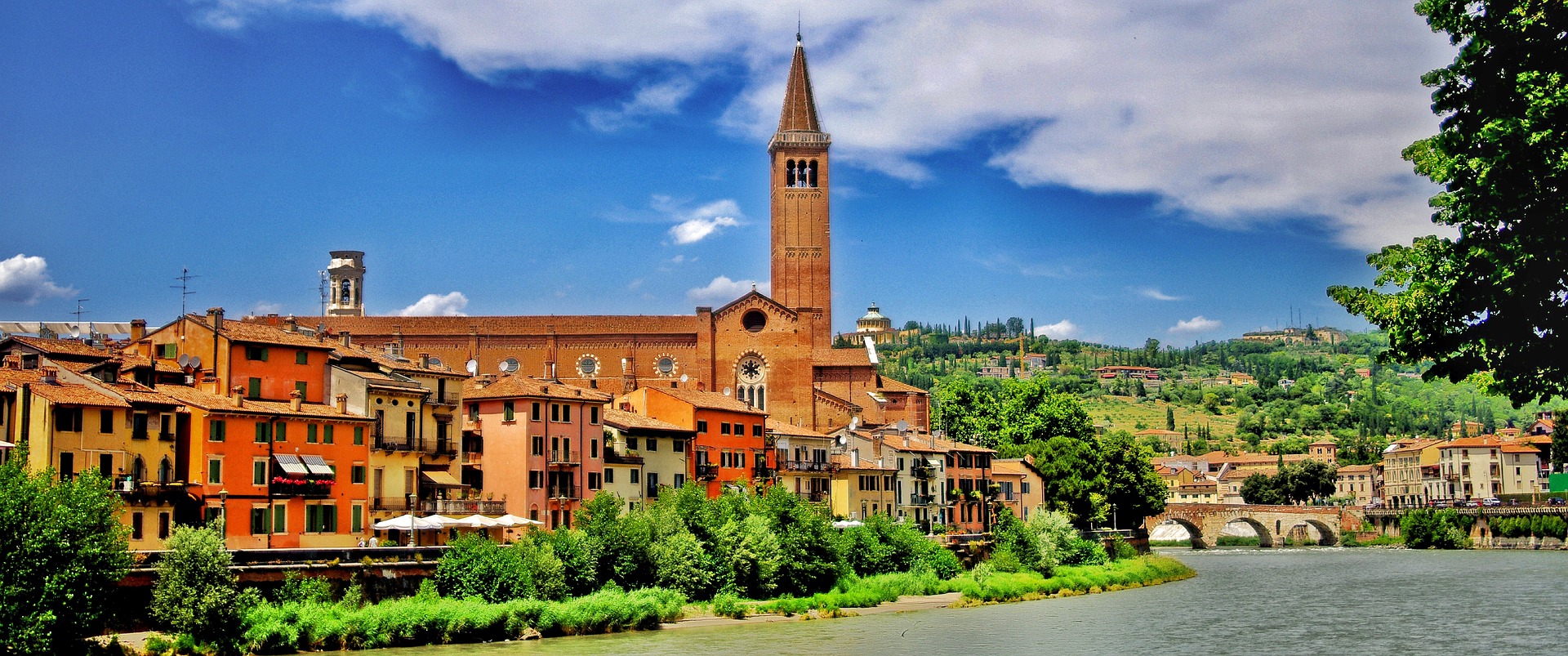
Or, for a real treat, why not soak up the views of Verona during a wine tasting in Verona. Book a Verona wine tasting and you will enjoy a tour of the vineyard, get to sample and learn about a selection of locally grown wines from a beautiful terrace overlooking the city.
Take a stroll along Verona’s city walls
Verona has more than one set of city walls, each built by different ruling groups over the years. In fact, there are three sets in total. The first were built by the Romans. Then followed the walls of the comune and finally the Scaliger family walls. Head there early morning and you’re likely to come across the locals enjoying their early morning runs!
Wander through the Giusti gardens
Another place to enjoy a walk in Verona are the Giusti Gardens. These are 16th century Renaissance style gardens. They were originally built by the Giusti family who lived in the residence here. This family were a rich family, whose wealth came through the wool dyeing trade in Verona. These days, the gardens are open to the public and it’s a great place to enjoy a couple of hours away from the hustle of the city. Not to mention a great place to enjoy some shade under the cypress trees. Whilst there, pop inside to discover part of their original family home. We recommend you visit early in the morning when you may even be lucky enough to have the gardens all to yourself.
Visit the Cathedral complex of Sant Maria Matricolare
The Cathedral in Verona is not just one building but a series of buildings. The complex here is home not just to the cathedral but also to two other Catholic churches – the Chiesa Rettoria di Sant’Elena and Battistero di San Giovanni in Fonte – as well as the Canons’ Cloister, the Capitular Library of Verona and more. There is also evidence of the remains of Roman villas and baths here too. The cathedral itself dates back to the 4th century AD but underwent considerable reconstruction after an earthquake in the 12th century. The interior is truly stunning, filled with pink stone columns and beautifully painted frescoes.
Visit Verona’s others churches
As with most Italian cities, Verona is no exception in boasting a number of beautiful churches. The first we particularly recommend you visit is the 13th century Gothic Basilica di Santa Anastasia. The exterior gives no hint of the grand, ornate and intricate interior, filled with frescoes, artworks and statues. So the story goes, those that touch the hump of the two marble hunchbacks at the entrance will receive good luck.
However, our favourite is the rather simpler San Fermo Maggiore. The 13th century Franciscan church here was built over an existing one that they left untouched. As a result, you can visit both the lower Romanesque floor and the upper French Gothic floor. In the lower church, the remains of martyred saints Firmus and Rusticus are kept. In the upper church, the ceiling is incredible, filled with over 400 busts of saints and some incredible wooden detailing. Think of it almost as two churches in one!
And last but not least on our list of churches in Verona is the Basilica di San Zeno Maggiore which stands adjacent to a Benedictine Abbey. This is about a 15 minute walk from the heart of Verona but it’s worth the trip. The interior of this church is simply breathtaking and again, look up to the ceiling to admire the beautiful wooden detailing. Many visit this church as its crypt was where the marriage of Shakespeare’s Romeo and Juliet took place.
Pay your respects to the dead
We fully appreciate that this may not be to everyone’s taste. But there is something quite spectacular about Italy’s cemeteries. The Cimiterio Monumentale in Verona is no exception. This 19th century cemetery is rather spectacular in its design, as are many of tombstones. It’s also the resting place on some famous Italians including the artist Umberto Boccioni.
Visit the world’s oldest library
The Biblioteca Capitulare in Verona is believed to be the oldest library still in operation today. It is home to a treasure trove of books and manuscripts. These include some of the earliest examples of the modern Italian language. It’s an incredible place to visit, especially when you remind yourself that some of Italy’s greatest poets – Dante and Petrarca – would have sat in its halls. Please note that the library is only available to visit by guided tour.
Enjoy a football match
Italians are passionate about football and the Veronese are no different. Head to Verona’s Stadio Marcantonio Bentegodi. The stadium has been home to Hellas Verona FC and was also home to AC ChievoVerona until 2021. You can also enjoy women’s football matches here played by Bardolino Verona CF, along with occasional athletics and rugby matches.
Verona Travel Guide to Events in Verona
The fruit and vegetable market in Verona is held daily in the Piazza delle Erbe. This is a market we recommend you visit. It sells everything from souvenirs to fresh, local produce. However, it’s not as authentic today as it once was. At the weekend, the square also hosts a popular antiques market. And in the Piazza San Zeno every Sunday, there is a wonderful flea market. Expect to find vintage clothing, antiques, art and furniture.
However, there are a number of annual events in Verona too. The first of these each year is around Valentine’s Day. In February, Verona in Love takes place, a festival dedicated to lovers the world over! A market takes place in the Piazza dei Signori selling everything from bespoke jewellery to sweet treats. A number of theatres, bars and restaurants will also put on special events to celebrate St Valentine. And in the Teatro Ristori is the Schermi d’Amore, a romantic film festival. There is even something for sporting enthusiasts in February too. The Romeo and Juliet half marathon takes place through the city streets each February.
Another great time to visit Verona is during the Verona Carnival. Known as the Bacanal del Gnoco, this is one of the oldest carnivals in Europe. Expect to see parades through the streets and the jovial figure of Papà del Gnoco handing out sweets to the children and small bowls of gnocchi to the grown ups!
This is closely followed by VinItaly. Usually held at the start of April each year, this event was founded in the 1960s. It is primarily aimed at wine professionals but is certainly open to anyone with a passion for fine wine.
The event in Verona we love the most is the Verona Opera festival which stretches across the Summer months. A series of concerts take place in the Arena di Verona. These do sell out so book your seats early to avoid disappointment. The Teatro di Romano in Verona similarly holds a regular series of Summer concerts from June through to the end of September
September also sees the International Festival of Street Games (tocati). This festival is a great opportunity to learn about the different cultures, games and celebrations of countries throughout the world.
In November, horse lovers will love the Fieracavalli, a fair dedicated to all things horsey! Visit to enjoy some incredible horse shows and to admire over 2000 horse specimens from dozens of different countries and from all sorts of breeds. The event takes place over 4 days and attracts around 150,000 people to the city each year, all with a passion for horses.
And the run up to Christmas is also a great time to visit Verona. The Piazza dei Signori and the courtyard of the Mercato Vecchio play host to a wonderful traditional Christmas market. This runs from mid November until the 26 December each year. Traditional wooden stalls and the scent of roasting chestnuts provide the perfect backdrop to bring out the Christmas spirit in you.
Verona Travel Guide to What to eat in Verona
All parts of Italy have their regional specialities. In Verona, if you can, try and enjoy some pandoro cake. This vanilla flavoured cake dates back to the 18th century and originated in Verona. Otherwise, if you’re in search of a savoury dish, opt for the risotto all’ Amarone, a risotto cooked in a red wine sauce. Or in the Winter months, try the hearty meat with pearà.
Another way to enjoy the local food is to enjoy a cooking class in Verona. We love this gelato making class in Verona. The cooking school is located in the heart of the city. We think it’s a particularly great cooking class to enjoy in the Summer months! Or, if you prefer to learn about savour cuisine, this cooking class in Verona will teach you how to make delicious Italian pasta dishes, along with the world famous tiramisu.
Or, combine a walking tour of Verona with some food tastings. Some tours have a focus on food. Some include not just food but also wine. We particularly recommend this Verona food and wine tour if you’re a bit of a foodie.
Verona Travel Guide to How to get around in Verona
Verona by bus
Once in Verona, a great way to find your bearings is to use the hop on, hop off bus tour of Verona. Climb aboard this red sightseeing bus and you will enjoy an audio commentary telling you all about Verona as you navigate your way around. You can buy either a 24 hour or 48 hour ticket, which allows you to hop on and off as many times as you want during this period. There are also two different routes around the city to ensure you can see all of Verona’s incredible sights.
Verona on foot
Enjoy a walking tour of Verona to really make the most of your time in the city. This 3 hour walking tour of Verona will take you to all the main attractions and will also give you skip the line tickets to the Arena di Verona too. A walking tour of Verona can also work really well with families. A family walking tour of Verona is a great way to keep the children entertained so that you can explore the city without any moans!
Verona by bike
Another option is to head out on two wheels and enjoy a bike tour of Verona. There are a number of Verona bike tours to choose from. If you’re short on time, it’s a great way to explore the city that little bit quicker.
Verona by water
For something completely different, you can even discover Verona by water! Opt for a beginners experience rafting on the Adige River. This can be a great option for families with children.


